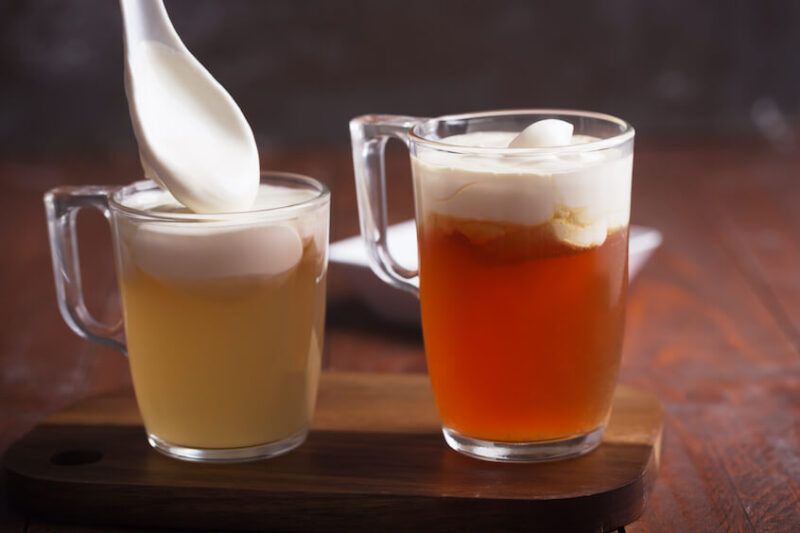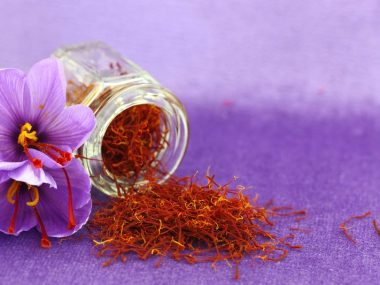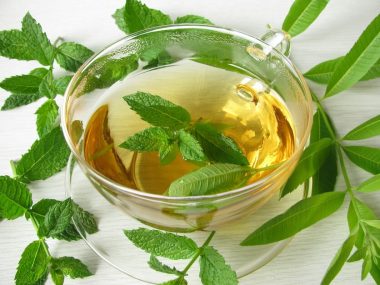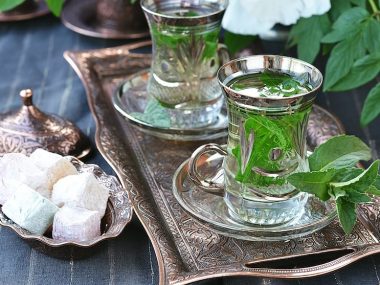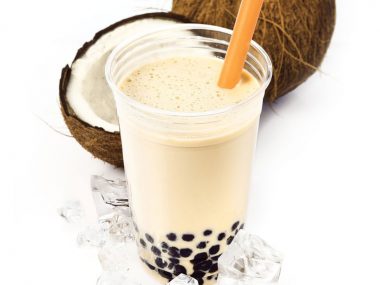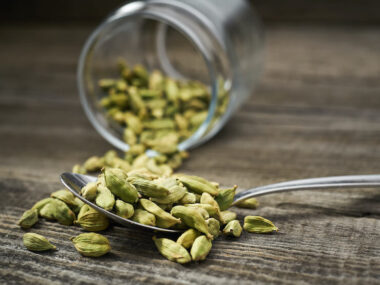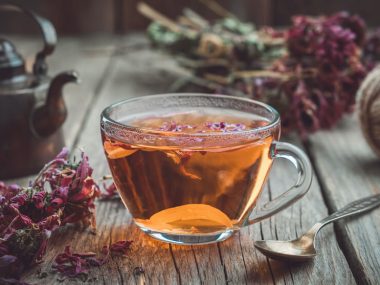What is all the hype behind people lining up out the doors of tea shops? Cheese tea is not what you think it is, and we are about to surprise you when we tell you what really goes into your cuppa!
Table of Contents
What Is Cheese Tea?
Cheese tea is a rather odd type of drink that has been sweeping the globe becoming very popular. Tea baristas cap off a tea with a creamy, thick white foam that has the consistency between a globby whipped butter and whipped cream.
What Does Cheese Tea Taste Like?
Cheese tea comes in so many different flavors and is made with various tea bases. A genuine true tea-based cheese (made with green or black tea) is often described as having a confusing flavor. Drinkers are taken on a journey of flavors that range from creamy, sweet, rich, buttery, salty, earthy, robust, and more.
Who Invented Cheese Tea?
Cheese tea got its start in Taiwan back in the late 1990s. Various Taiwanese tea shops played around with trying to invent different versions that contained ingredients we may never know about.
However, it wasn’t until 2012 that modern cheese tea made its appearance in Taiwan. Cheese tea is known by other names in Asia, such as “nai gai cha,” “milk-lid tea,” “cheezo tea,” and more. Since then, it has spread like wildfire throughout the world. And it all came down to a young man who created the drink the way he thought tea drinkers would enjoy.
Nie Yunchen (of Jiangmen, Guangdong Province, Taiwan) was about 27 years old when he created the modern twist of cheese tea in 2012. The powder base used to make milk teas (and perhaps a version of cheese tea) was lacking in quality and taste.
Yunchen took an existing tea and made it better by replacing the powder mix with a UHT (ultra-high-temperature processed) cream sourced from New Zealand. His OG recipe is secret. However, there are claims that he also used New Zealand’s Anchor cream cheese. By whipping these ingredients together, a frothy, creamy cheese topping had come to life.
Yunchen went on to open a large chain of tea shops that specializes in his new cheese teas. People have since waited in lines (up to several hours) to order cheese tea in one of many of Yunchen’s tea shops. He was propelled into becoming a wealthy entrepreneur and was listed by Forbes Magazine as one of the “30 Under 30 Asia” (30-year-old entrepreneurs who earned a fortune.)
What Nade Yunchen Cheese Tea Different
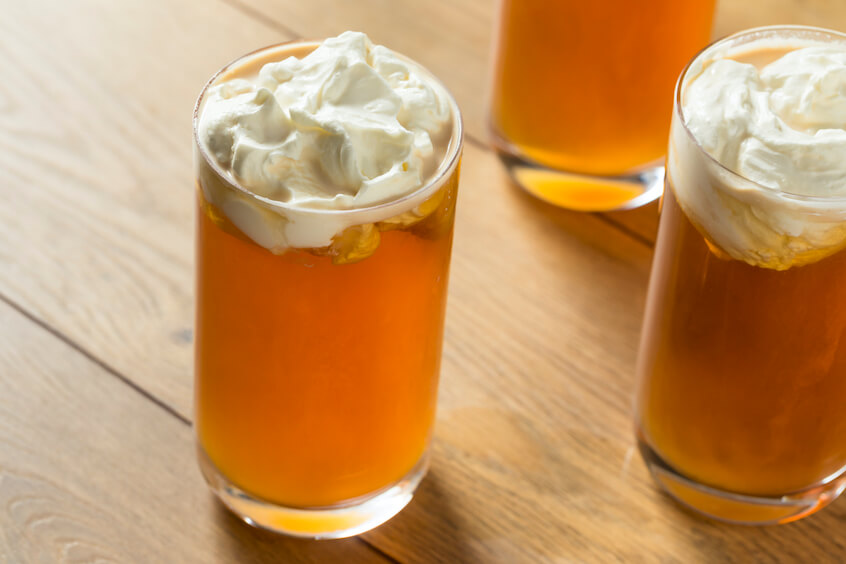
Powder-base mixes are used throughout the tea shop industry to make bubble (boba) teas. The quality and flavor in a milk tea made from powder vs. fresh dairy are noticeable by the more experienced tea drinkers.
Yunchen saw a need to provide tea drinkers with something healthier, more functional as a topping for tea that didn’t sink or immediately liquify, and most importantly, tasted great.
A combination of dairy, cream cheese, Himalayan pink salt, and the right amount of whisking yielded exactly what he strived for. It resulted in the perfect cheese tea topping that floated, appealed aesthetically, and had an unexpectedly delicious sweet and salty flavor.
A genuine cheese tea topping with cream and cream cheese has the amazing ability to tame the astringency of tea (true teas such as black, green, oolong, white, yellow) because of the subtle sweetness of the cheese topping. The salt is another layer of flavor that we are all so keen on when it comes to pairing sweetness with saltiness.
So What Kind Of Cheese Is In Cheese Tea?
Surprise! A genuine cheese tea (foam) topping is nothing more than cream and cream cheese. Many tea shops opt to use the powder mix, and they market their cheese teas as cheddar, cheesecake, tiramisu, and other flavors. The powder is more convenient to store and use and inexpensive than using fresh cream and cream cheese. Typically, the cheese powder is added to water or condensed milk and is whipped until frothy. These powder mixes contain milk solids, non-dairy creamer, sugar, a caking agent, artificial flavoring/color, and a stabilizer.
Types Of Cheese Teas
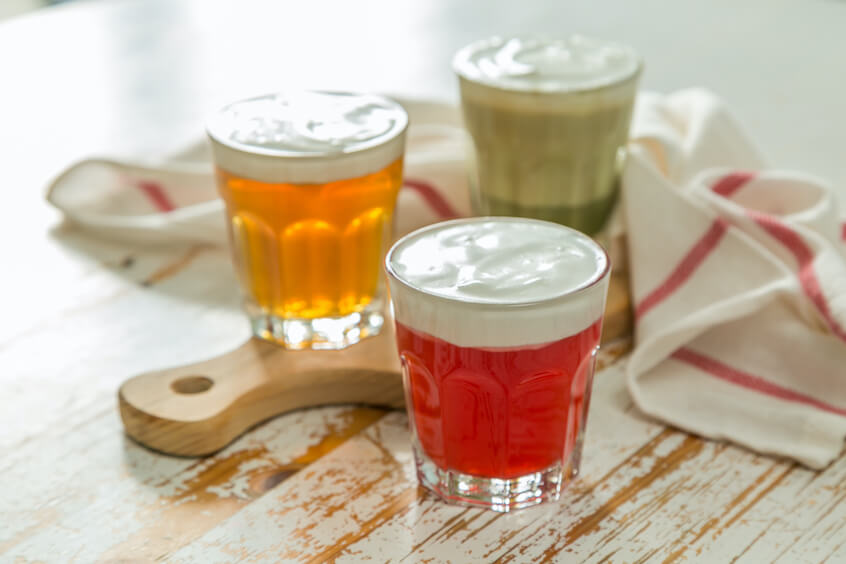
Tea shops have different ways to prepare cheese tea, and some go as far as combining other ingredients.
The One True, Genuine Cheese Tea
This cheese tea is made from freshly brewed tea (green, black, oolong, yellow, or white.) A frothy topping of cream and cream cheese (which has been whipped) is carefully spread on top of ice-cold tea. A small pinch of salt goes on top of the cheese topping.
A very unique cheese tea (genuine) is called “Camouflage.” It looks like a cup full of camo-looking tea! The inside of a clear cup is painted with the cream/cream cheese mixture. Next, matcha tea is added. A tiny bit of black tea is carefully added. Then using a stir stick, the drink is subtly swirled to create the effect. Lastly, the cheese topping is added.
Flavored Cheese Teas
Tea shops using powder mixes can create cheese teas such as cheesecake, cheddar cheese, tiramisu, creme brulee, and more. Basically, there’s no limit to how imaginative some people get with their cheese combos!
Cheese Milk Tea
Cheese milk tea is a bubble (boba) tea with a cheese foam topping. A brew of tea (usually black or green) is poured over ice and black tapioca pearls. The cheese topping (usually made from a powder mix) is poured on top of the tea. Drinkers shake the tea to mix the cheese topping, which then creates a milk tea.
How Much Caffeine Is In Cheese Tea?
There are many cheese teas out there that are made from sugary fruit drinks or herbal teas (tisanes.) These cheese teas do not contain caffeine. However, a cheese tea made with true tea (black, green, oolong, yellow, white) will have caffeine. A six-ounce serving of black or green tea contains about 50 mg of caffeine. Most cheese tea serving sizes come in either 16 or 20-ounce cups. With this in mind, a black or green cheese tea can have as much as 100 mg of caffeine (16 oz. cup) to 134 mg (20 oz. cup.) The FDA’s recommended daily intake of caffeine is no more than 400 mg.
Is It Okay To Drink Cheese Tea Every Day?
Cheese tea made with sugary fruit drinks, boba (bubble/milk) teas, or herbal teas (tisanes) should be consumed as an occasional treat. Excessive intake of sugary drinks can lead to weight gain. Certain herbal teas can cause adverse effects or may interact with medications. Overconsumption of such herbal teas used in making cheese tea can lead to those unpleasant effects/interactions.
Cheese Tea Benefits
If a cheese tea is made with a true Chinese tea (green, black, oolong, white, yellow), the tea base does provide benefits. Claims of true teas being antioxidant, antiviral, antifungal, antibacterial, antihypertensive, and more are why many tea drinkers opt to enjoy tea.
There are no benefits to drinking a sugary, fruity, or milky version of cheese tea other than the pleasure of having it as an indulgence.
How To Drink Cheese Tea
When it comes to enjoying a cheese tea, there’s a particular way to drink it to enjoy it as it was meant to be. Tea shops that specialize in cheese tea have menu options that one must get to know to order.
Amount of Desired Ice
- Regular (full cup is filled)
- Less (¾ of the cup is filled)
- Light (½ of the cup is filled)
- None (no ice)
Desired Sweetness Level
- 100% (sweetest)
- 70% (very sweet)
- 50% (sweet)
- 30% (slightly sweet)
- 0% (no sweetness)
Cheese tea is served in clear cups with a special lid that has two slits on the small area where you drink from. This pair of slits allow drinkers to enjoy the cheese topping (top slit) and tea (bottom slit) with every sip. However, to get that perfect ratio flowing through those slits, you must hold your cup at a 45-degree angle as you sip.
Cheese Tea Recipe
We have a great way to make Cheese tea at home without much hassle. Enjoy!
Ingredients
- ½ cup of heavy whipping cream
- 1 tablespoon of cream cheese (Tip: use fat-free for a healthier option.)
- 2 cups of brewed tea (Tip: be sure to refrigerate it ahead of time to chill)
- 1 tiny pinch of pink Himalayan salt
Directions
- Brew the tea ahead of time and refrigerate for 1-2 hours.
- Allow the cream cheese to sit at room temperature for 20 minutes.
- Whip the heavy whipping cream until frothy.
- Add the cream cheese to the whipped cream and whip with a wooden spoon.
- Pour the cold-brewed tea into a glass.
- Gently spread the cheese topping on top of the tea.
- Sprinkle the salt on top of the cheese topping and enjoy!
Confusing, But Oh So Yummy!
Trying cheese tea is like riding a roller coaster for the first time. The anticipation can be a bit scary, but once you have done it, you are filled with exhilaration and go back for more!
